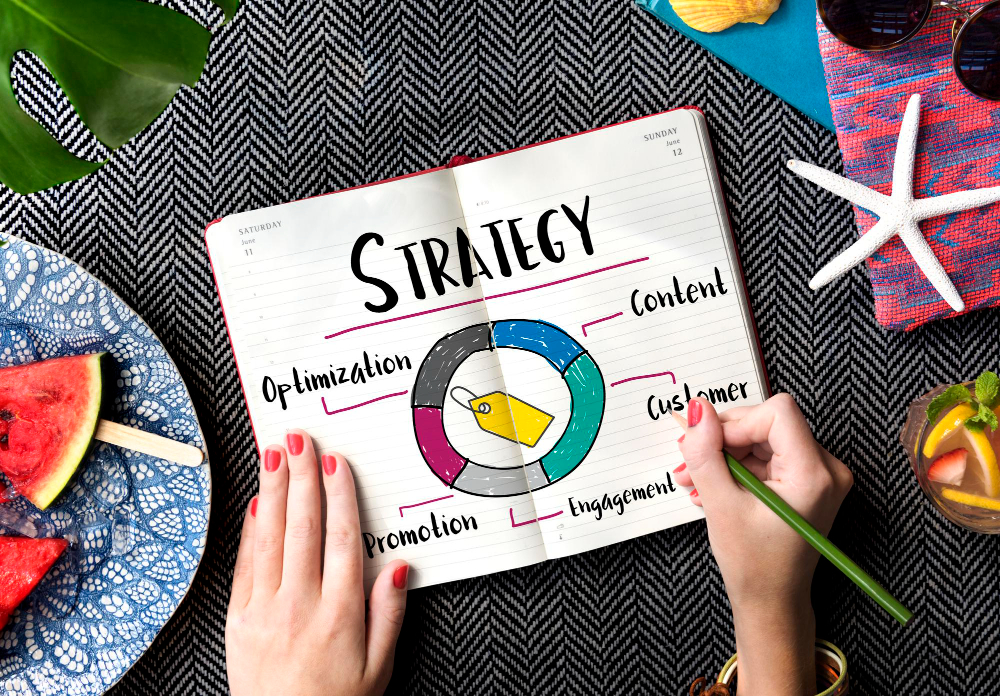Have you ever wondered why some businesses just click with people while others seem to speak a different language?
Well, my friend, you’re in for a treat. Grab a metaphorical front-row seat because we’re diving into the nitty-gritty of six principles of persuasion that can turn your client’s interactions into genuine connections. These principles have been discussed at length by American psychologist Dr. Robert Caldani, renowned for his extensive career dedicated to scientific inquiries into the factors influencing individuals to respond affirmatively to requests, and Professor Dennis Regan of Cornell University, who is known for his famous “Coca-Cola” study on reciprocity behaviour.
As a Student of Advertising, I’m still learning. I am sharing how I simplified things for myself, especially in this digital age of information overload. Let’s dive in!
1. Reciprocity: Give to Receive
Imagine walking into a bakery, and the owner hands you a warm, gooey sample of their latest pastry creation. You instantly feel a sense of warmth and a tad bit obligated, right? That’s reciprocity in action. It’s like a social contract that says, “Hey, I did something for you; now, you might want to do something for me.” Then there is also the consideration of ‘it’s not what you do but how you do it’.

Now, let’s apply this to your client’s world. Encourage them to dish out some goodies upfront; maybe it’s an insider tip, a free resource, or an exclusive offer. By giving first, they’re not just sharing; they’re triggering a sense of reciprocity in their audience.
It’s not about manipulation; it’s about creating a connection where everyone feels part of something special.
It’s like delving into the psychology of marketing, where the goal is to identify and activate those mental buttons that encourage people to choose your product. In the reciprocity dance, your clients lead with generosity, setting the stage for a meaningful exchange beyond transactions. It’s not just about pastries or freebies; it’s about creating a genuine connection that lingers in the minds of their audience.
Consider how Spotify skillfully incorporates reciprocity into its strategy, allowing listeners to enjoy ad-free music without cost. Users are given the additional perk of curating their favourite songs, and all it takes is a simple exchange – providing their name and email address. However, this complimentary service has limits; after a month, it concludes unless users decide to elevate their experience by opting for the premium upgrade. In this scenario, Spotify utilises reciprocity to create a mutually beneficial relationship with its audience, offering a taste of premium features in exchange for user information and encouraging them to become paying subscribers.
2. Commitment and Consistency: Start Small, Go Big
Think of this one as planting a tiny commitment seed. You start with something small and watch it grow. It’s like convincing your friend to join you for a quick coffee and suddenly finding yourselves on a weekend road trip.
Now, in the world of client engagement, we’re talking about nudging your clients to kick things off with easy-peasy asks. Maybe it’s a simple sign-up or a quick survey. Here’s the psychology juice behind it: once people commit to something small, they’ve got this itch for consistency.
It’s like saying, “I did this small thing, so why not do this bigger thing too?”
This isn’t just random talk; it’s a classic study by Dr. Robert Cialdini, who found that people who make a small commitment are more likely to say ‘yes’ to a more significant request later. Applying this to client engagement, when your client’s audience starts with these easy asks, it sets the stage for a more profound connection.
Consider how Fitbit plays the commitment and consistency game with its users. They offer a platform where individuals can set fitness goals and monitor their progress. This isn’t just about tracking steps; it’s a strategic move rooted in the principle of commitment and consistency. According to the concept, people tend to stick to their goals more effectively when they publicly commit to them and monitor their progress over time. So, by encouraging users to set and track their fitness objectives, Fitbit is fostering healthier habits and leveraging the psychological pull of commitment and consistency to keep users engaged and motivated.
In a nutshell, commitment and consistency are like the incredible path to gradually ramping up engagement. So, when it comes to connecting with your audience, starting small is the secret sauce that can lead to going big.
3. Social Proof: Show, Don’t Tell

Have you ever chosen a restaurant because everyone online was raving about it? Or have you ever snagged a new gadget because your social media feed couldn’t stop talking about it? That’s social proof in action.
Your clients can harness this psychological phenomenon by showcasing real stories. It’s about saying how great they are and letting others do the talking. Encourage them to share customer testimonials and success stories or even offer glimpses into a day in their team’s life.
This isn’t just a shot in the dark; it’s backed by the psychology of conformity and the wisdom of the crowd. People naturally look to others for guidance, especially in uncertain situations. The more your clients demonstrate that others have had positive experiences, the more likely their audience is to hop on the bandwagon.
Take the classic case of Amazon. Those customer reviews? That’s social proof doing its magic. Numerous positive testimonials create a sense of trust and confidence in the product. Applying this to your clients, weaving real stories into their narrative builds authenticity. It’s not just saying, “We’re legit”; it’s showing exactly why through the experiences of others.
Numerous positive testimonials create a sense of trust and confidence in the product.
So, when your clients embrace social proof, they’re not just marketing; they’re creating a narrative that speaks volumes without uttering a word. It’s the art of letting the collective voice affirm, “Hey, we’re the real deal, and here’s the proof.”
4. Authority: Establish Credibility
Here, your clients get to play the expert card. When you spot a chef donning a crisp white hat, you instantly trust their recommendations on the menu, don’t you? The same principle applies to your clients. The game plan here is to position them as the go-to experts in their field.
So, how does this work? It’s all about sharing the wealth of knowledge your clients possess. Whether through blogs, industry insights, or even a podcast, when your clients put their expertise on display, it sends a clear message: “We know our stuff.”
Let’s weave a bit of psychology into this.
Research suggests that people are naturally inclined to trust and follow those perceived as authorities.
It’s like an automatic switch; when your clients are seen as the experts, their audience is more likely to trust what they say.
Take the example of Neil deGrasse Tyson in the world of astrophysics. When he talks, people listen. Why? Because he’s established himself as an authority in the field. The same can happen to your clients. By showcasing their knowledge and expertise, they’re not just playing a marketing card but building credibility.
So, when your clients become the trusted voices in their domain, the audience listens and actively engages. It’s the art of establishing authority, creating a magnetic pull that draws their audience in, eager to absorb insights and participate in the conversation.
5. Liking: Connect on a Personal Level

Imagine you’re at a lively party, and within moments, you strike up a great conversation with someone who shares your love for that obscure indie band. That’s likability in action. Finding common ground that forms an instant connection. Now, let’s bring this connection magic to your clients.
For them, it’s not just about showcasing products or services; it’s about revealing the human side. Invite them to share personal stories, values, or even the adorable pet project a team member is working on. Why?
People desire connections with real humans, not faceless brands.
Psychologically, this taps into the concept of likability. When your clients become relatable, sharing snippets of their personality, interests, or the behind-the-scenes of their team, it transforms their audience from mere customers to friends. It’s the feeling of, “Hey, these are my kind of people.”
Consider the success of Ben & Jerry’s ice cream. It’s not just about the delicious flavours; the brand’s commitment to social and environmental causes, the quirky flavour names, and the team’s passion make them likeable. By connecting on a personal level, your clients turn transactions into relationships.
So, when your clients become more than a logo and start sharing the human side of their brand, they’re not just winning customers – they’re gaining friends. It’s the likability factor that goes beyond transactions, making their audience feel like they’re part of a community, not just consumers.
6. Scarcity: Create a Sense of Urgency
Let’s chat about scarcity, the secret ingredient that adds a little kick to your engagement strategy. Think of those Black Friday deals or those sneakers that vanish faster than you can say “limited edition.” Scarcity is the buzz creator, and your clients can harness this energy.
Encourage them to spotlight exclusive offers, limited-time discounts, or one-time events. It’s not about strong-arming people; it’s about tapping into that potent fear of missing out (FOMO). When something is in short supply, human psychology kicks in, and suddenly, everyone wants to be part of the action.
Consider the hype around Apple product launches. The limited stock and exclusive features create a frenzy. Your clients might not launch the latest tech gadget, but they can infuse that same sense of urgency into their offerings.
It’s about tapping into that potent fear of missing out
It’s like adding a dash of spice to a dish, and you don’t need a lot, but it transforms the entire experience. Scarcity becomes the extra kick that propels people to take action. When there’s a limited supply, it triggers a sense of urgency, and people are more likely to jump in.
So, when your clients dabble in the art of scarcity, they’re not just offering a product or service but presenting an opportunity. It’s the spice that fuels excitement, propelling their audience to engage swiftly before the chance slips away.
Conclusion
Mastering the persuasion game is not about trickery but about making real connections. We’ve discussed these six astounding principles: reciprocity, commitment, social proof, authority, liking, and scarcity. They’re the secret sauce for making your client’s interactions meaningful and long-lasting.
So, here’s the deal: your clients need to embrace these principles like old friends. Picture it as a journey through the digital age’s human connection landscape. It’s about creating connections beyond the surface.
These principles serve as the glue that holds together relationships. Your clients aren’t just snagging customers; they’re building connections that can weather any storm. In today’s world, mastering persuasion is the heart of businesses that get the power to keep it real.




